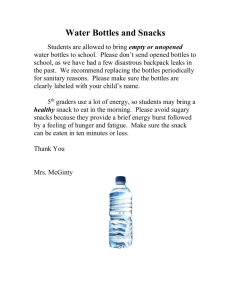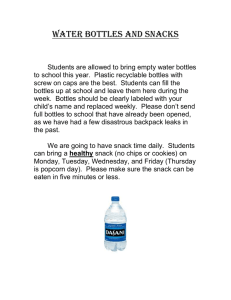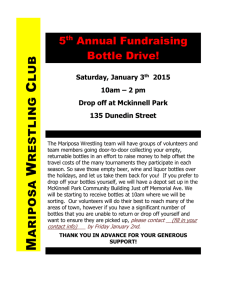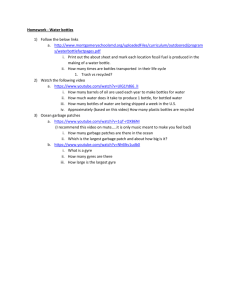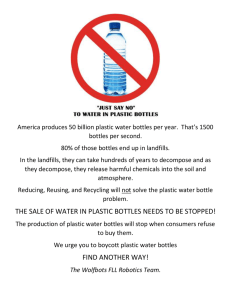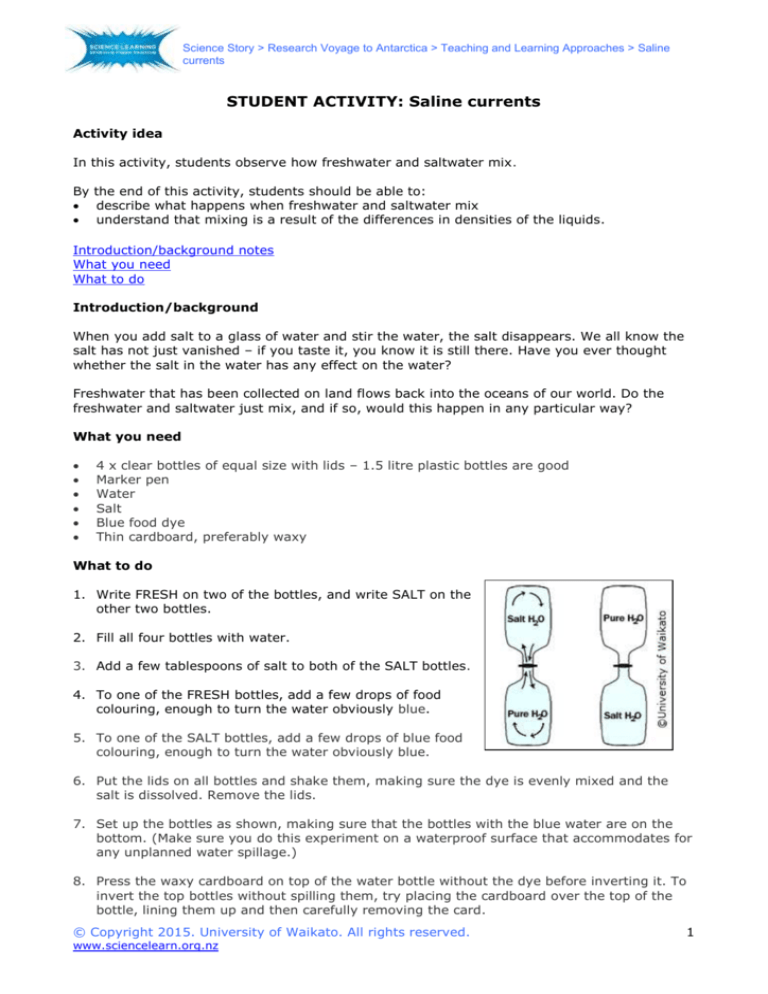
Science Story > Research Voyage to Antarctica > Teaching and Learning Approaches > Saline
currents
STUDENT ACTIVITY: Saline currents
Activity idea
In this activity, students observe how freshwater and saltwater mix.
By the end of this activity, students should be able to:
describe what happens when freshwater and saltwater mix
understand that mixing is a result of the differences in densities of the liquids.
Introduction/background notes
What you need
What to do
Introduction/background
When you add salt to a glass of water and stir the water, the salt disappears. We all know the
salt has not just vanished – if you taste it, you know it is still there. Have you ever thought
whether the salt in the water has any effect on the water?
Freshwater that has been collected on land flows back into the oceans of our world. Do the
freshwater and saltwater just mix, and if so, would this happen in any particular way?
What you need
4 x clear bottles of equal size with lids – 1.5 litre plastic bottles are good
Marker pen
Water
Salt
Blue food dye
Thin cardboard, preferably waxy
What to do
1. Write FRESH on two of the bottles, and write SALT on the
other two bottles.
2. Fill all four bottles with water.
3. Add a few tablespoons of salt to both of the SALT bottles.
4. To one of the FRESH bottles, add a few drops of food
colouring, enough to turn the water obviously blue.
5. To one of the SALT bottles, add a few drops of blue food
colouring, enough to turn the water obviously blue.
6. Put the lids on all bottles and shake them, making sure the dye is evenly mixed and the
salt is dissolved. Remove the lids.
7. Set up the bottles as shown, making sure that the bottles with the blue water are on the
bottom. (Make sure you do this experiment on a waterproof surface that accommodates for
any unplanned water spillage.)
8. Press the waxy cardboard on top of the water bottle without the dye before inverting it. To
invert the top bottles without spilling them, try placing the cardboard over the top of the
bottle, lining them up and then carefully removing the card.
© Copyright 2015. University of Waikato. All rights reserved.
www.sciencelearn.org.nz
1
Science Story > Research Voyage to Antarctica > Teaching and Learning Approaches > Saline
currents
9. Ask students what they think is going to happen. Ask them to take a note of their
predictions and try to be as specific as possible.
10. Have students observe what happens once the card has been removed and check whether
their predictions were correct. (The students should find that the coloured water mixes with
the colourless water in one pair of the bottles but not the other.)
11. Discuss the results. The water in all four bottles had the same temperature and both setups had dyed water, so there must be another driving factor for the water to mix or not.
(Mixing is a result of the differences in densities of the liquids.)
12. This activity can lead to further discussions and investigations about the effects of
freshwater and saltwater mixing in the oceans. Scenarios could be rivers flowing into the
sea or the freshwater locked in the glaciers on the Antarctic Peninsula that is melting and
mixing with the saltwater of the Southern Ocean.
© Copyright 2015. University of Waikato. All rights reserved.
www.sciencelearn.org.nz
2

